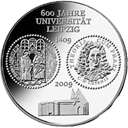About this project
The DEA Virtual Museum of World Heritage is part of the Digital Epigraphy and Archaeology project at the University of Florida. It first opened its "electronic gates" on July 12, 2013 during our lecture at the Digital Classicist Seminar in London, United Kingdom.
The Virtual Museum offers a web interface for browsing the 3D digitized inscriptions and archaeological artifacts from the Digital Epigraphy and Archaeology database. The database was developed as part of the Digital Epigraphy Toolbox, a software funded by the National Endowment for the Humanities for digitizing and disseminating inscriptions in their tridimensional form.
The goal of the Virtual Museum interface is to facilitate the digital preservation and dissemination of important historical tridimensional artifacts in a form easily accessible form the web-browser of a personal computer, or other electronic devices, such as tablets and smart phones. Furthermore, the 3D exhibits can be easily embedded into other web-sites, databases, or digital platforms, such as interactive digital books.
History of the project
The Digital Epigraphy and Archaeology Project is the work of an interdisciplinary group of researchers and expert consultants that aims to assist and promote epigraphic and archaeological research and also have a significant impact on Digital Humanities.
In 2007 we formed an interdisciplinary group at the University of Florida that consists of computer engineers, epigraphists, and classicists and we have developed methods for epigraphic analysis. In 2011 the DEA project was awarded a grant by the National Endowment for the Humanities for the development of a graphical interface that includes user friendly options for 3D visualization of inscriptions, 3D navigation, and comparative analysis of letter forms.
Since its establishment our project has been presented in nationally and internationally acclaimed conferences, such as the 104th American Institute of Archaeology Annual Meeting, the 13th Congress of Greek and Latin Epigraphy hosted by Oxford University, the 14th Congress of Greek and Latin Epigraphy hosted by Humboldt University, the Digital Humanities Seminar Series at the University of Leipzig. We were also awarded the second place in the international competition for the e-humanities innovation award organized by the University of Leipzig.
Our preliminary results have been published in the Journal of Machine Vision and Applications and have attracted attention from other institutions that led to a collaborative publication in Alessandria with the University of Milan.
The ultimate goal of the Digital Epigraphy and Archaeology group is to set advanced technologies to the service and promotion of the Humanities and bridge gaps in collaborative and interdisciplinary research.
Funding
Our team would like to thank the public and private foundations, organizations, and institutes that have supported our digital humanities projects.
2013, Center for the Humanities and Public Sphere, University of Florida, Award for digitization: $3,000.
2011-2012, National Endowment for the Humanities, Office of Digital Humanities, Award: HD-51214-11, $48,534.
2011, Digital Worlds Institute, University of Florida, Grant for the purchase of a 3D scanner, $18,000.
2010-present, Digital Worlds Institute, University of Florida, Technology support.
2008, Gerondelis Foundation, Award: $10,000.
2008-present, Center for Greek Studies, University of Florida, Travel funding support.

Public Presentations
